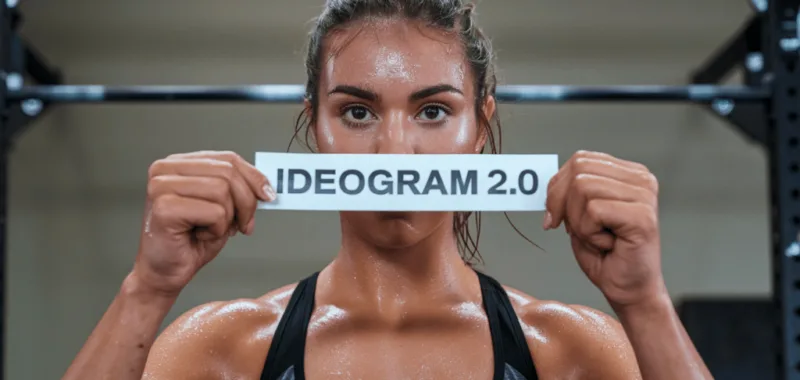Join our daily and weekly newsletters for the latest updates and exclusive content on industry-leading AI coverage. Learn More
Ideogram unveiled version 2.0 of its text-to-image model today, positioning the year-old startup as a formidable challenger to established players like Midjourney and DALL-E 3. This latest release introduces advanced features and competitive pricing that could reshape the landscape of artificial intelligence-driven content creation.
The cornerstone of Ideogram 2.0 is its improved text rendering capabilities, addressing a persistent challenge in AI image generation. “The Design style significantly improves text rendering in Ideogram 2.0, and it enables you to create premium graphic designs including greeting cards, t-shirt designs, posters, illustrations with longer and more accurate text,” the company announced via X.com.
This advancement could be a major paradigm shift for businesses and content creators relying on clear, on-brand messaging in their visual content. Accurate text rendering has long been a stumbling block for AI image generators, often producing distorted or illegible text that fails to meet professional standards. Ideogram’s breakthrough could revolutionize rapid prototyping in advertising and branding, allowing for faster iteration and more precise visual communication.
Color control and API: Empowering designers and developers alike
The introduction of a customizable color palette feature further enhances Ideogram’s appeal to professional users. “Choose from multiple color palettes for images, giving you precise control over the color scheme. This is useful for brand consistency or for capturing a specific vibe,” the company tweeted. This level of control addresses a crucial need for brands aiming to maintain visual consistency across their digital assets, potentially streamlining workflows and reducing the need for post-generation editing.
The launch of a public beta API marks another strategic move to expand Ideogram’s reach. By enabling developers and businesses to integrate its technology into their own applications and workflows, Ideogram is positioning itself as a versatile solution for a wide range of industries. The company’s statement, “We offer superior image quality at a lower cost compared to other models,” highlights a competitive pricing strategy that could attract cost-conscious enterprises looking to scale their AI-generated visual content.
Ethical implications and market impact: Navigating the future of AI-generated imagery
However, Ideogram’s rapid advancement raises important questions about the future of creative industries. The increasing sophistication of AI-generated imagery could disrupt traditional design and illustration workflows, potentially reducing demand for human artists in certain sectors. Conversely, it may also democratize design capabilities, allowing smaller businesses and individual creators to produce professional-quality visuals without significant investment in design expertise or software.
The ethical implications of AI-generated imagery also loom large. As these tools become more powerful and accessible, concerns about copyright infringement, the spread of misinformation, and the potential for creating deepfakes become more pressing. Ideogram, like its competitors, will need to navigate these complex issues carefully to build trust with enterprise clients and avoid potential regulatory scrutiny.
From a market perspective, Ideogram’s entry into the competitive AI image generation space could catalyze further innovation and price competition among established players. This could accelerate the adoption of AI-generated imagery across industries, from e-commerce and digital marketing to entertainment and education.
Hands-on with Ideogram 2.0: Pushing the boundaries of AI-generated text and images
In our own testing of Ideogram 2.0, the model performed exceptionally well. We were able to generate an image that has long eluded other AI models. The prompt we used was “A high resolution image of the text ‘VentureBeat’ made out of a computer chip.” The model delivered an image with perfect accuracy, each letter distinctly rendered. This level of precision in text generation is rare in the marketplace and represents a significant advancement in AI image creation capabilities.
To further explore the potential of Ideogram 2.0’s output, we fed the generated images into Luma’s Dream Machine 1.5 for animation. The results were astounding. Within less than five minutes, we had created a high-quality short video clip suitable for use as a social media bumper or a standalone advertisement. This rapid turnaround from concept to finished product hints at even greater possibilities with more refined inputs and storyboarding.
All in all, Ideogram 2.0 appears poised to push the entire AI image generation industry forward. The capabilities demonstrated by this tool, especially when combined with other AI technologies, herald an era of unprecedented ease in content creation.
As businesses and creators begin to harness these powerful new tools, we can expect to see a proliferation of high-quality, AI-generated visual content across various media platforms. As the AI image generation landscape evolves at breakneck speed, one thing is clear: the writing’s on the wall — and thanks to Ideogram 2.0, it’s crystal clear and perfectly rendered.
Source link

